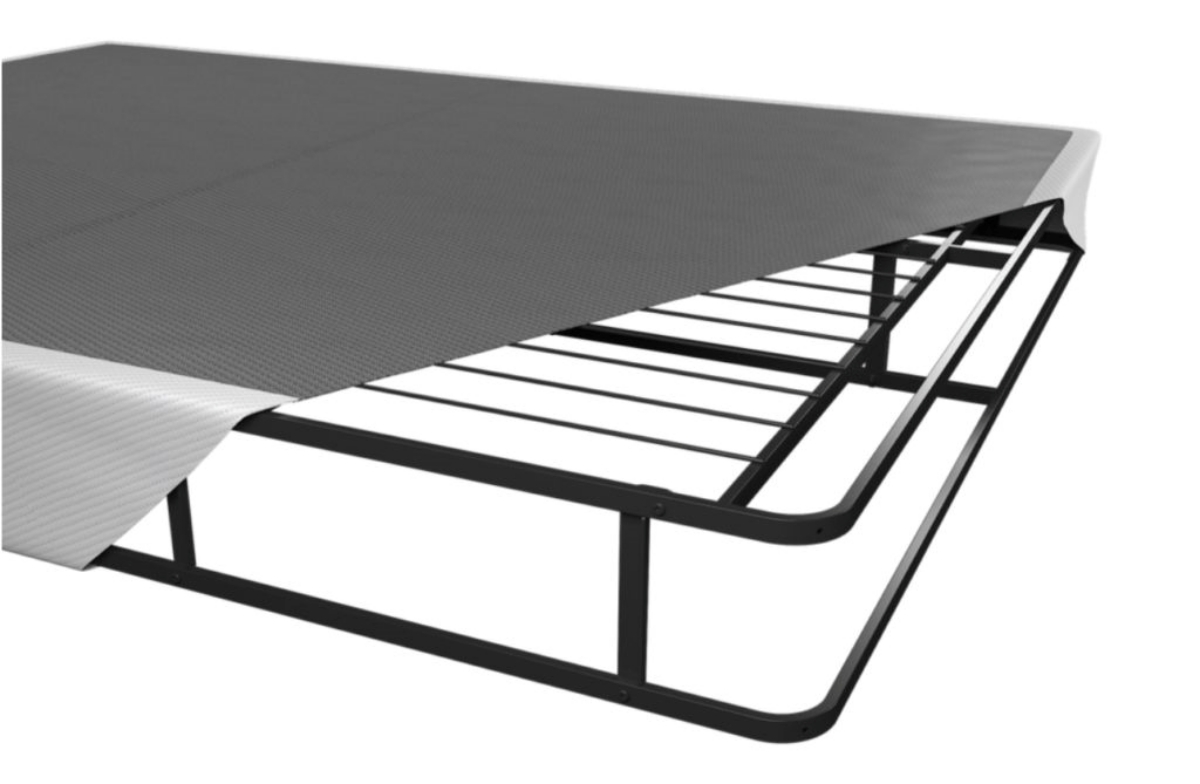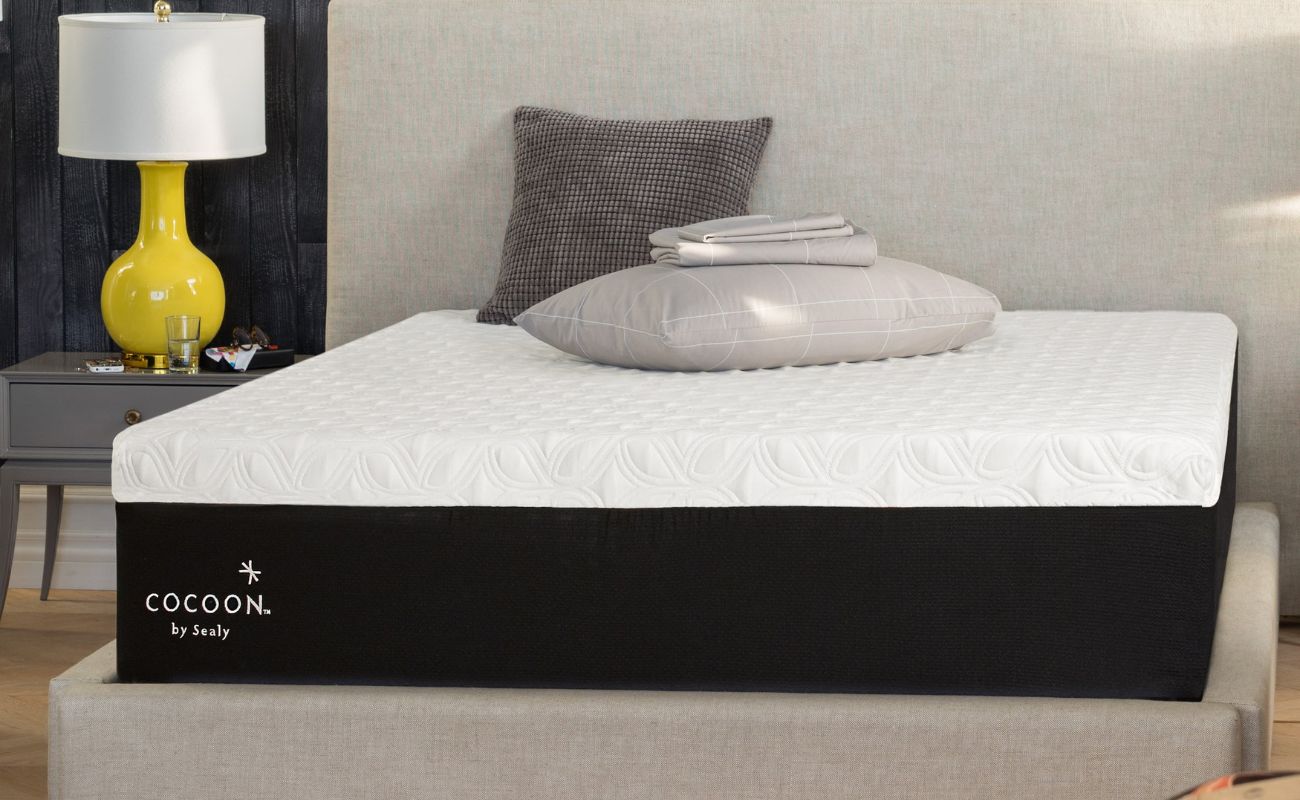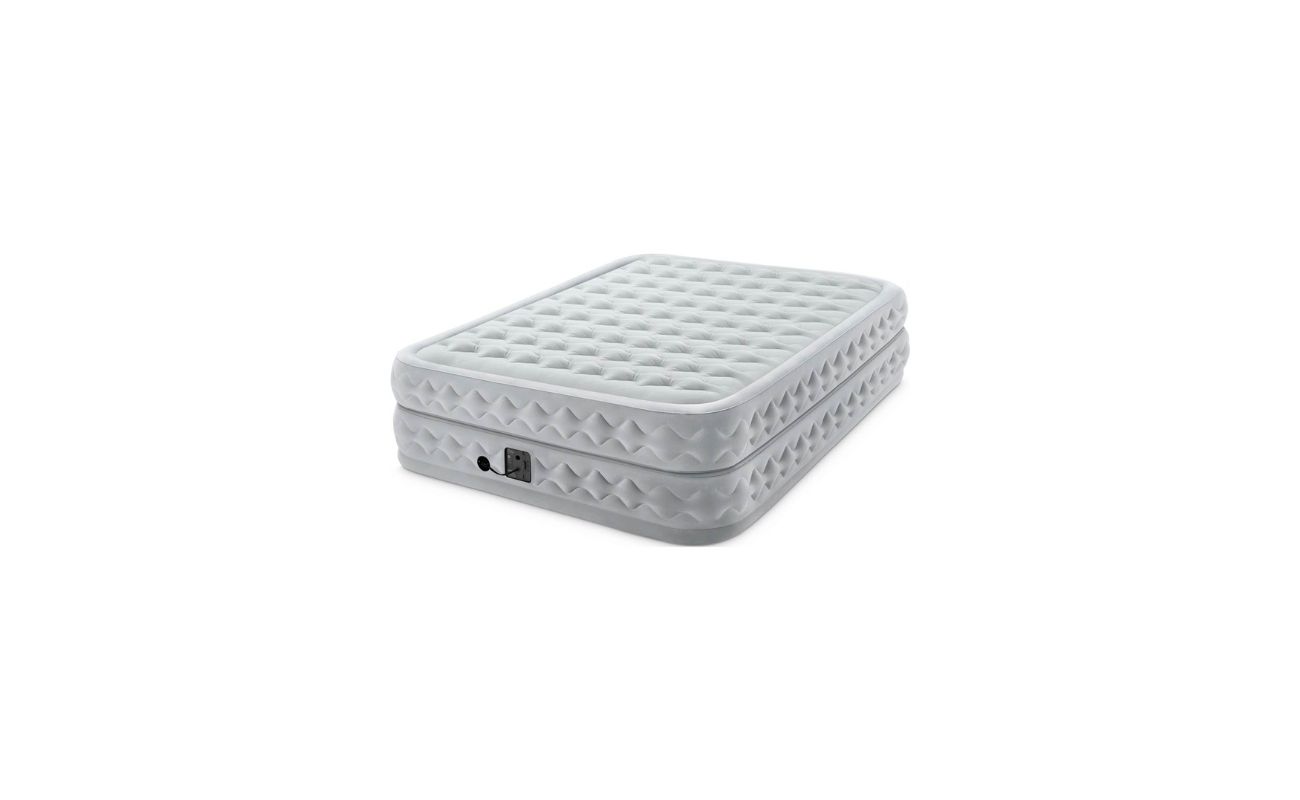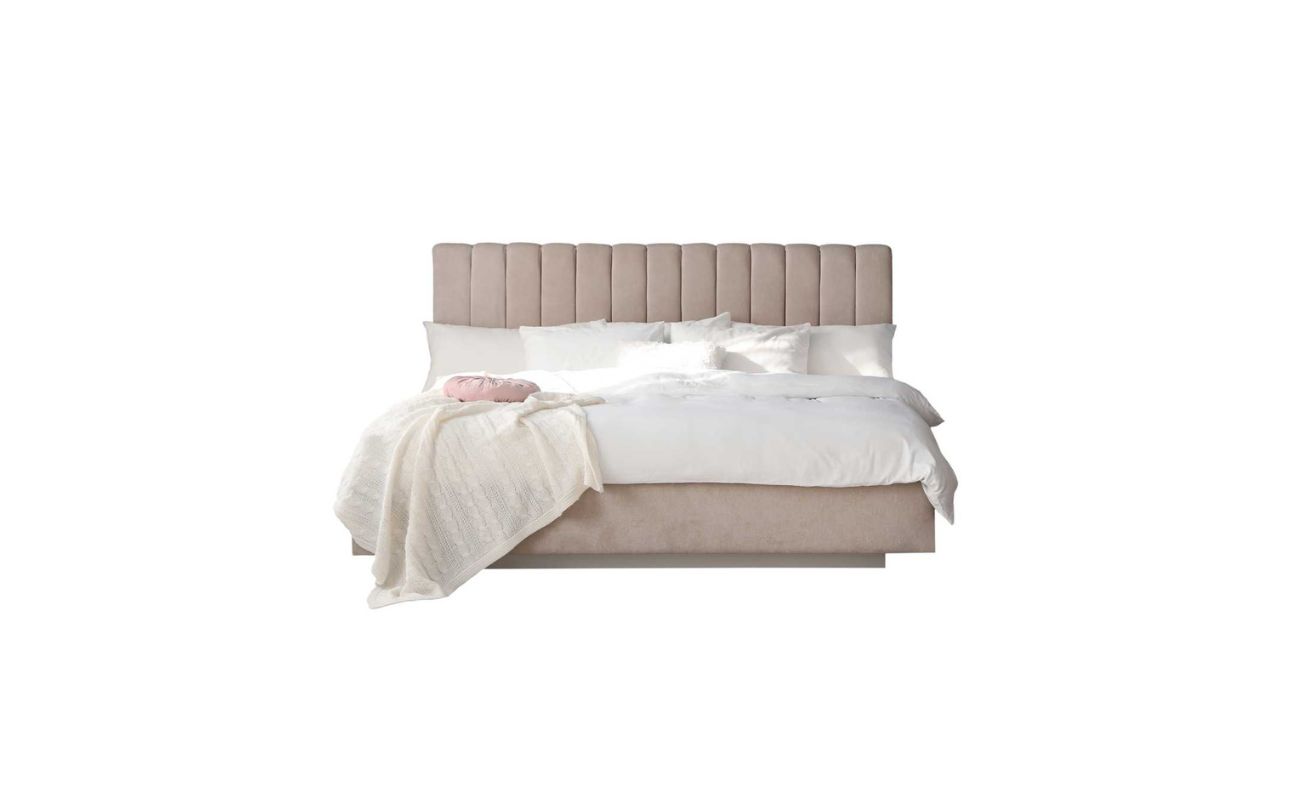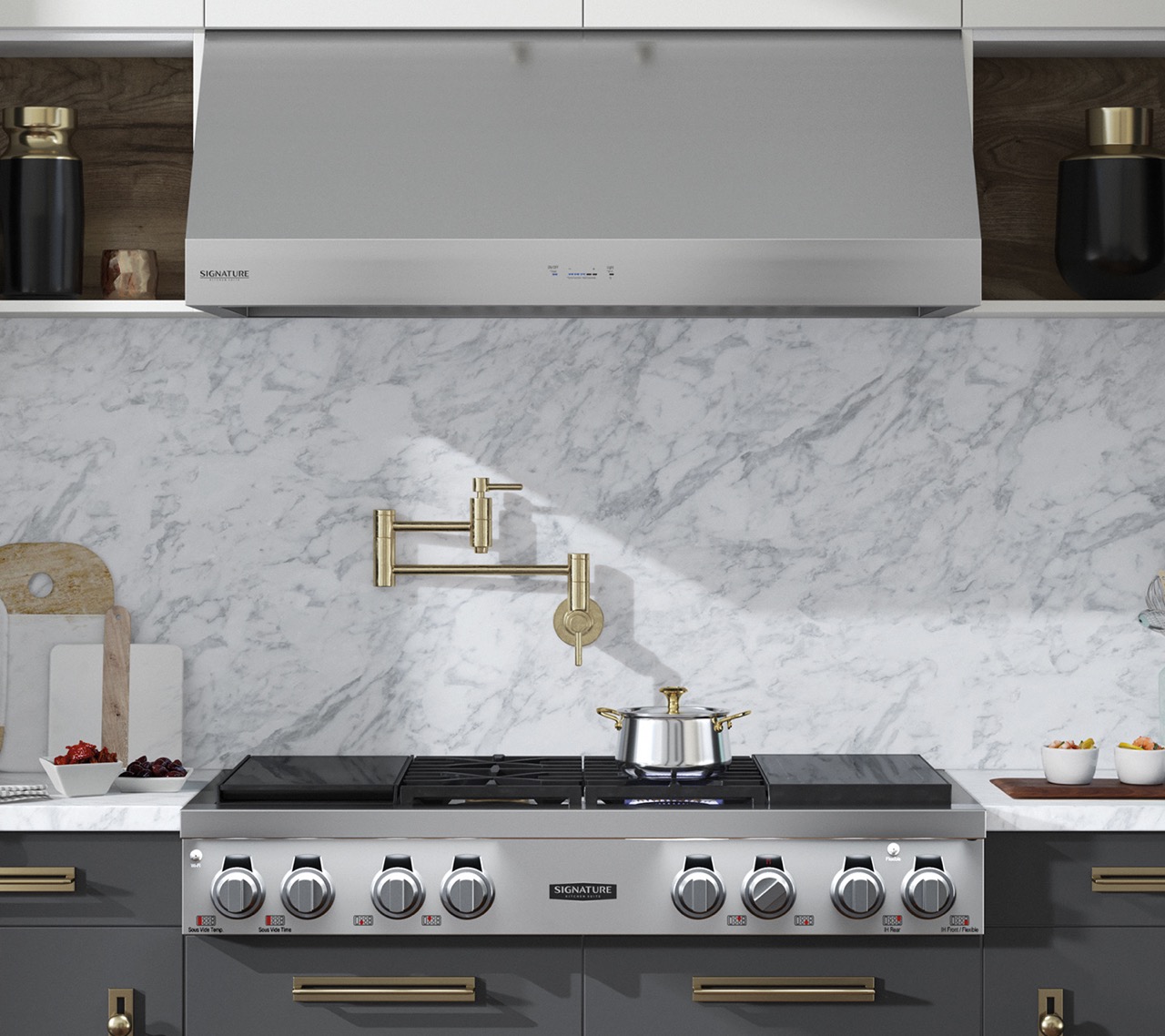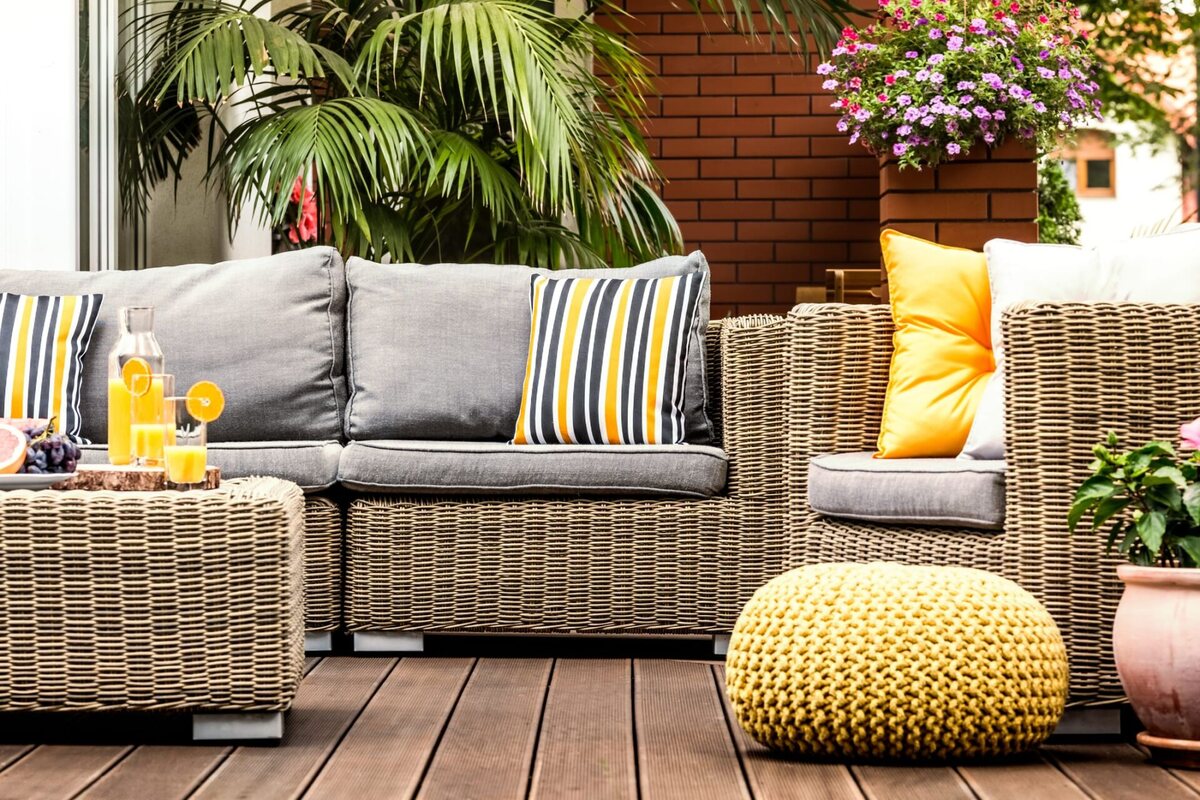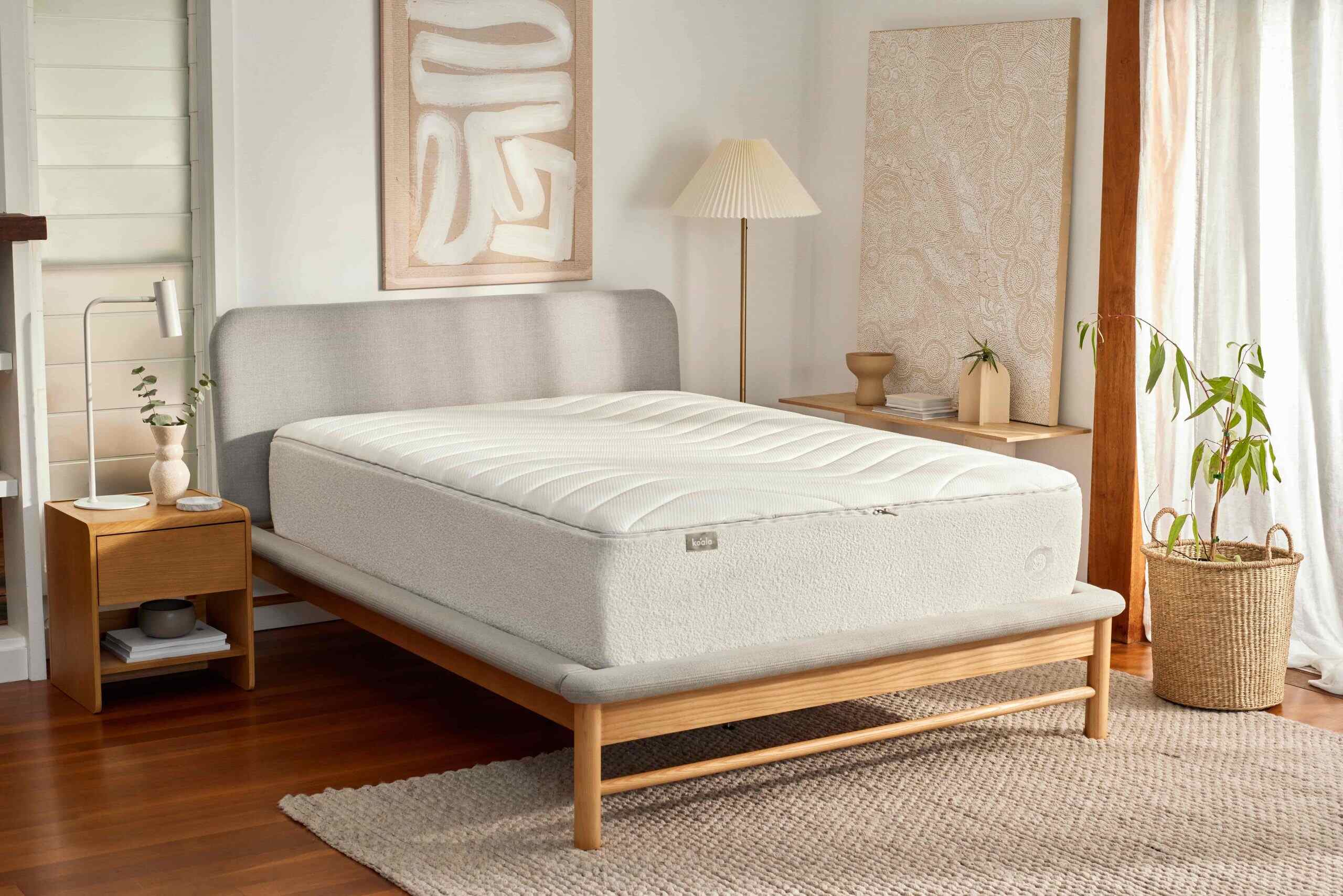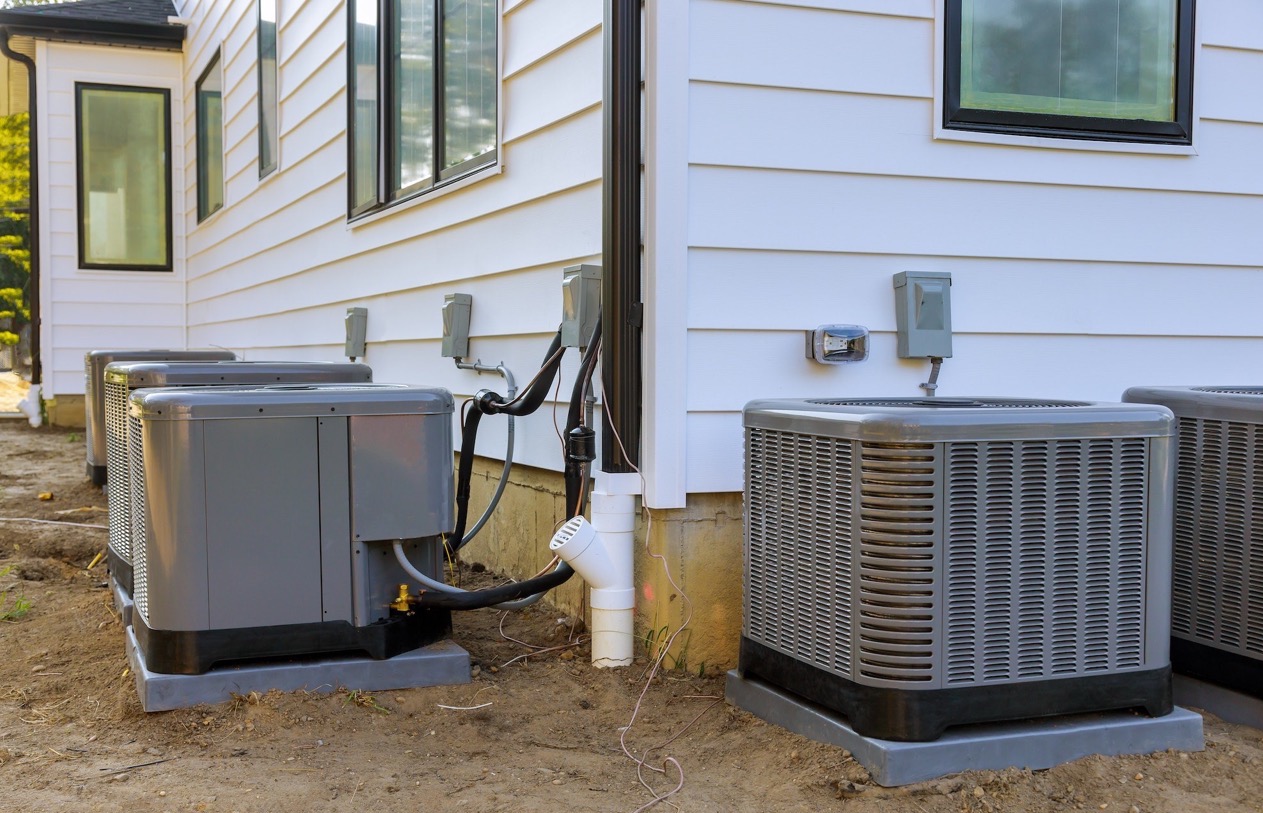Home>Furniture>Bedroom Furniture>What To Look For In Buying A New Mattress
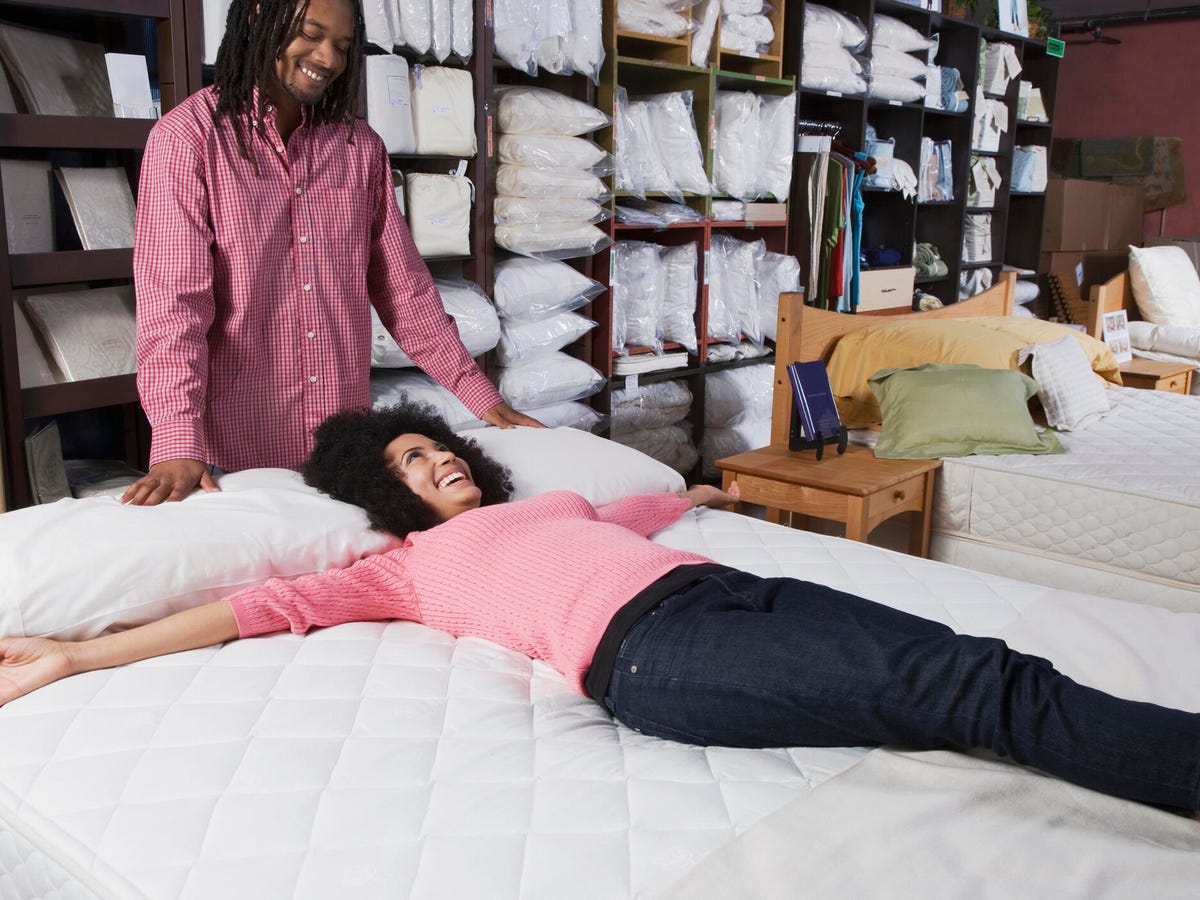

Bedroom Furniture
What To Look For In Buying A New Mattress
Modified: March 6, 2024
Looking for a new mattress? Find out what to look for when buying bedroom furniture. Make the right choice for a comfortable and restful sleep.
(Many of the links in this article redirect to a specific reviewed product. Your purchase of these products through affiliate links helps to generate commission for Storables.com, at no extra cost. Learn more)
Introduction
Welcome to the world of bedroom furniture! When it comes to creating a cozy, comfortable, and stylish bedroom, one of the most important pieces to consider is the mattress. A good mattress plays a crucial role in ensuring a restful night’s sleep and waking up refreshed and rejuvenated.
Choosing the right mattress can be overwhelming with the plethora of options available on the market. From different sizes to various materials and varying levels of support, it can be challenging to navigate through the choices. However, fear not! In this article, we will guide you through the factors to consider when buying a new mattress, helping you make an informed decision.
Before delving into the specifics, it’s essential to recognize that personal preferences and needs vary from person to person. While some may prefer a plush surface to sink into, others may enjoy a firmer feel for optimal support. Ultimately, it’s crucial to find a mattress that caters to your individual needs.
Key Takeaways:
- Choose a mattress that feels comfortable and provides proper support to ensure a good night’s sleep. Test different options and consider your sleeping habits and preferences.
- Consider the size, durability, and temperature regulation of the mattress. Look for hypoallergenic options and understand the warranty and return policy before making a purchase.
Read more: How Often Should You Buy A New Mattress
Comfort Level
When shopping for a new mattress, comfort is a top priority. The comfort level refers to how the mattress feels when you lie down on it. Some people prefer a soft, plush feel, while others prefer a firmer surface. It ultimately boils down to personal preference and what feels the most comfortable for you.
Keep in mind that comfort is subjective, and what works for one person may not work for another. It’s advisable to test out different mattresses by lying on them for a few minutes in the store. This will give you a sense of how it feels and whether it provides the level of comfort you desire.
Additionally, consider factors such as body weight and sleeping positions. People who are heavier may need a firmer mattress for adequate support, while lighter individuals may find softer mattresses more comfortable.
Remember, a mattress that is too soft may not provide enough support for your spine, potentially leading to discomfort and pain. On the other hand, a mattress that is too firm may cause pressure points on your body, resulting in a restless night’s sleep. Finding the right balance of comfort and support is crucial.
Nowadays, you can find mattresses that offer customizable comfort levels. These mattresses often have multiple layers or zones that can be adjusted to provide different levels of firmness. This feature is especially useful for couples with different preferences, as each side of the bed can be tailored to individual needs.
Ultimately, selecting a mattress with the right comfort level is essential for a good night’s sleep. It should allow you to relax, alleviate pressure points, and provide the proper level of support for your body.
Support
When it comes to choosing a new mattress, support is a critical factor to consider. The level of support a mattress provides plays a significant role in maintaining proper spinal alignment and ensuring a comfortable sleep experience.
A mattress with good support will keep your body in a neutral position, which means your spine is aligned correctly when lying down. This helps prevent discomfort and pain in the back, neck, and joints.
There are different types of support systems used in mattresses, such as innerspring, memory foam, latex, and hybrid mattresses. Each type offers a unique feel and level of support.
Innerspring mattresses are known for their traditional spring coil support systems. These coils provide bounce and support, and the level of support can vary depending on the coil gauge and the number of coils in the mattress. For those seeking a more traditional feel with responsive support, an innerspring mattress may be the right choice.
Memory foam mattresses, on the other hand, are designed to contour to the shape of your body, providing personalized support. The foam responds to your body heat and weight, allowing it to distribute pressure evenly and alleviate pressure points. This can be particularly beneficial for those with joint or back pain.
Latex mattresses are known for their responsiveness and durability. They provide a combination of support and comfort, as latex has a natural elasticity that allows it to conform to your body while providing necessary support. Latex mattresses are also resistant to dust mites and allergens.
Hybrid mattresses combine different materials to provide the benefits of multiple mattress types. For example, they may feature a combination of memory foam and innerspring coils, offering both support and comfort. Hybrid mattresses are a great option for those who want the benefits of different materials in one mattress.
When evaluating the support of a mattress, consider your body weight and sleeping position. Heavier individuals may need a firmer mattress to adequately support their weight, whereas lighter individuals may prefer a softer feel. Additionally, side sleepers often benefit from a mattress that provides ample support for the hips and shoulders.
Ultimately, finding a mattress that provides the right level of support for your body is essential for a comfortable and pain-free night’s sleep.
Size
Choosing the right size mattress is crucial for ensuring a comfortable and spacious sleep surface. The size you select will largely depend on your individual needs, available space in your bedroom, and any unique requirements you may have.
Here are the most common mattress sizes:
- Twin: Ideal for children or single adults with limited space. It measures 39 inches wide by 75 inches long.
- Twin XL: Slightly longer than a standard twin, making it suitable for taller individuals. It measures 39 inches wide by 80 inches long.
- Full/Double: A step up from a twin, providing extra width. It measures 54 inches wide by 75 inches long.
- Queen: The most popular mattress size. It offers ample space for couples or individuals who prefer more room to stretch. It measures 60 inches wide by 80 inches long.
- King: Provides ample space for couples and individuals who like a lot of room to spread out. It measures 76 inches wide by 80 inches long.
- California King: Similar in width to a king-size mattress, but longer. It’s an excellent choice for taller individuals. It measures 72 inches wide by 84 inches long.
When deciding on the size, consider factors such as the size of your bedroom, the number of people sharing the bed, and personal preferences. If you sleep alone and have limited space, a twin or twin XL may be sufficient. However, if you have a partner or like to stretch out, a queen or king-size mattress is recommended.
It’s also important to consider the dimensions of your bed frame and any other furniture in the room. Ensure that the mattress size you choose fits well within the available space without feeling cramped.
Remember, a larger mattress size may require a larger bed frame, sheets, and bedding, so keep these additional costs in mind when making your decision.
Ultimately, selecting the right mattress size is essential for creating a comfortable and spacious sleep environment that meets your specific needs.
Materials
When it comes to mattress shopping, understanding the different materials used is vital in making an informed decision. Each material offers unique features and benefits, so let’s explore some of the most common options:
- Innerspring: Innerspring mattresses use a system of metal coils as their primary support structure. These coils provide bounce and support, making them a popular choice for individuals who prefer a more traditional feel. Innerspring mattresses often have layers of foam or padding on top for added comfort.
- Memory Foam: Memory foam mattresses have gained popularity in recent years. They are known for their exceptional ability to contour to the body, providing personalized support and pressure relief. Memory foam responds to body heat, cradling the sleeper and helping to align the spine.
- Latex: Latex mattresses are made from natural or synthetic latex foam. They offer a combination of comfort and support, providing a responsive, bouncy feel. Latex is known for its durability, breathability, and resistance to allergens.
- Hybrid: Hybrid mattresses combine two or more materials to offer the benefits of each. They often feature a combination of innerspring coils and layers of foam or latex. Hybrid mattresses aim to provide both support and comfort, catering to a wide range of sleep preferences.
- Polyurethane Foam: Polyurethane foam is a common material used in both budget-friendly and high-end mattresses. It offers varying levels of support and comfort, depending on its density. It is worth noting that high-density polyurethane foam tends to be more durable and provide better support.
When choosing a mattress material, consider factors such as your sleeping position, personal preferences, and any specific needs you may have. Memory foam mattresses, for example, excel at relieving pressure points and accommodating different sleep positions. Latex mattresses are a great choice for those who prefer a more natural and responsive feel.
It’s also important to consider the materials used in the mattress cover or ticking. Look for materials that are breathable, moisture-wicking, and hypoallergenic to promote a healthy sleep environment.
Ultimately, the choice of mattress material depends on your individual preferences and needs. Consider the level of support, comfort, and durability you desire to find the right mattress material that will provide a restful night’s sleep.
Read more: What To Look For In A Crib Mattress
Durability
When investing in a new mattress, durability is an important factor to consider. After all, you want your mattress to provide a comfortable and supportive sleep surface for years to come. Understanding the factors that affect the durability of a mattress can help you make an informed decision.
The lifespan of a mattress can vary depending on the quality of materials used, construction techniques, and overall care. Here are some essential factors to consider when assessing the durability of a mattress:
- Quality of Materials: High-quality materials tend to be more durable and resistant to wear and tear. Look for mattresses made from durable foams, high-density coils, and solid construction materials.
- Construction Technique: Pay attention to the construction method of the mattress. Quality mattresses often have a sturdy and well-built design that aids in longevity. Reinforced edges, multiple layers, and durable stitching can all contribute to the mattress’s durability.
- Weight Capacity: Consider the weight capacity of the mattress. If you or your partner are heavier individuals, it’s important to choose a mattress that can comfortably support your weight. Look for mattresses specifically designed to handle higher weight limits.
- Maintenance and Care: Proper maintenance and care can significantly extend the lifespan of your mattress. Follow the manufacturer’s guidelines for rotating or flipping the mattress, using a mattress protector, and keeping it free from stains and spills.
- Brand Reputation: Research the reputation of the mattress brand or manufacturer. Look for trusted brands known for producing durable and long-lasting mattresses. Reading customer reviews and seeking recommendations can help give you an idea of a brand’s track record.
It’s important to note that the lifespan of a mattress can vary depending on usage. On average, a well-maintained mattress can last between 7 to 10 years. However, factors such as weight, frequency of use, and individual sleep habits can impact the lifespan.
Investing in a durable mattress ensures that you get the most out of your purchase and enjoy a comfortable sleep environment for years to come. Take the time to research and choose a mattress known for its durability and quality construction.
When buying a new mattress, consider the firmness level that best suits your sleeping position and body type. This will help provide the right support and comfort for a good night’s sleep.
Motion Isolation
If you share your bed with a partner or have a restless sleep, motion isolation is an essential consideration when choosing a mattress. Motion isolation refers to a mattress’s ability to absorb and minimize the transfer of motion, allowing for undisturbed sleep.
A mattress with good motion isolation can be particularly beneficial for couples, as it reduces the impact of one person’s movements on the other. This means that if your partner tosses and turns throughout the night, you won’t feel the motion on your side of the bed, allowing you to sleep soundly.
Memory foam mattresses are often praised for their excellent motion isolation properties. The viscoelastic foam material can absorb movement and prevent it from spreading across the surface of the mattress. This can be especially beneficial for light sleepers or those easily disturbed by their partner’s movements.
Innerspring mattresses, on the other hand, may not provide the same level of motion isolation as memory foam. The interconnected coil system in these mattresses can transfer more motion across the bed. However, some innerspring mattresses may incorporate features such as individually wrapped coils or foam layers to enhance motion isolation.
Hybrid mattresses, which combine memory foam or latex with innerspring coils, can offer a good balance of motion isolation and support. By utilizing the benefits of both materials, hybrid mattresses can minimize motion transfer while still providing a responsive and supportive sleep surface.
When shopping for a mattress, consider your sleep habits, as well as any potential disturbances throughout the night. If you or your partner tend to move around frequently, a mattress with excellent motion isolation can help ensure a more peaceful sleep environment.
Reading product descriptions and customer reviews can provide valuable insights into a mattress’s motion isolation capabilities. Look for mattresses that are specifically designed or advertised as having good motion isolation to meet your sleep needs.
By selecting a mattress with effective motion isolation, you can enjoy uninterrupted sleep and wake up feeling refreshed, even if your partner is restless during the night.
Temperature Regulation
Achieving a comfortable sleep temperature is crucial for a restful night’s sleep. If you tend to sleep hot or live in a climate that experiences temperature fluctuations, it’s important to choose a mattress that offers effective temperature regulation.
Some mattresses are designed with materials and technologies that promote airflow and heat dissipation, helping to keep you cool throughout the night. Here are a few factors to consider when evaluating a mattress’s temperature regulation capabilities:
- Open-Cell Foam: Memory foam mattresses with open-cell foam construction allow for better airflow, allowing heat to dissipate more efficiently. This helps prevent the mattress from trapping heat and can help regulate your body temperature during sleep.
- Gel-Infused Foam: Mattresses infused with cooling gel beads or gel layers can provide enhanced temperature regulation. The gel absorbs and disperses heat away from your body, helping to keep you cool while you sleep.
- Breathable Materials: Look for mattresses made with breathable materials, such as natural latex or plant-based foams. These materials facilitate airflow and provide a cooler sleeping surface.
- Coil Systems: Innerspring or hybrid mattresses with open coil systems naturally allow for better airflow and ventilation. The spacing between the coils allows heat to escape and promotes a cooler sleep experience.
- Phase Change Materials: Some mattresses incorporate phase change materials (PCMs) in their construction. These materials absorb and release heat, helping to regulate your body temperature and keep you comfortable throughout the night.
In addition to the mattress itself, consider the type of bedding and mattress protector you use. Opt for breathable, moisture-wicking sheets and mattress protectors to further enhance airflow and temperature regulation.
It’s important to note that individual preferences and factors such as room temperature and personal sleep habits can also influence sleep temperature. Therefore, it’s recommended to try out the mattress and assess its temperature regulation properties based on your own sleep experience.
If you tend to sleep hot, prioritize mattresses with features and materials that promote temperature regulation. Reading customer reviews and researching product descriptions can provide insight into a mattress’s cooling capabilities.
By selecting a mattress with effective temperature regulation, you can enjoy a cool and comfortable sleep environment, promoting uninterrupted rest and rejuvenation.
Allergens and Hypoallergenic Options
If you suffer from allergies or have sensitivities to certain allergens, selecting a mattress that is hypoallergenic can make a significant difference in your sleep quality and overall well-being. Hypoallergenic mattresses are designed to reduce the presence of allergens and create a cleaner sleep environment. Here are some factors to consider:
- Dust Mites: Dust mites are one of the most common allergens found in mattresses. Look for mattresses with features that make it difficult for dust mites to thrive, such as a tight-knit mattress cover or allergen-resistant fabric.
- Bed Bugs: While bed bugs are not typically associated with mattresses themselves, they can infest them. Choose mattresses with bed bug-resistant features, such as tightly woven fabrics or encasements that prevent bed bugs from entering or exiting the mattress.
- Anti-Microbial Treatment: Some mattresses are treated with anti-microbial agents that help inhibit the growth of bacteria, mold, and fungi. This can be particularly beneficial for those with respiratory issues or sensitivities.
- Hypoallergenic Materials: Look for mattresses made from hypoallergenic materials, such as natural latex or organic cotton. These materials are less likely to trigger allergies and can provide a healthier sleep environment.
- Easy Cleaning: Mattresses with removable and washable covers make it easier to keep your sleep surface clean and free from allergens. Regular washing of the cover can help reduce the presence of allergens and promote a healthier sleep environment.
It’s important to note that while hypoallergenic mattresses can help reduce allergens, it’s also essential to maintain regular cleaning habits and take steps to minimize allergen exposure in your bedroom. This includes washing bedding regularly, vacuuming the mattress, and using hypoallergenic pillow and mattress protectors.
If you have severe allergies or specific sensitivities, consider consulting with a healthcare professional or allergist to discuss your mattress options. They can provide personalized recommendations based on your specific needs.
When shopping for a hypoallergenic mattress, look for certifications or labels indicating that the mattress meets certain standards for allergen control. Additionally, reading customer reviews and researching the materials used in the mattress can provide insight into its hypoallergenic properties.
By choosing a hypoallergenic mattress, you can create a sleep environment that is less likely to trigger allergies, promoting better sleep and overall well-being.
Read more: What To Look For In A Mattress Topper
Warranty and Return Policy
When purchasing a new mattress, it’s essential to consider the warranty and return policy offered by the manufacturer or retailer. These policies provide valuable protection and peace of mind in case of any defects or dissatisfaction with the mattress. Here’s what to look for:
Warranty:
A mattress warranty is a guarantee from the manufacturer that protects against defects in materials and workmanship. It’s important to understand the terms of the warranty, as they can vary from one brand to another. Here are some key elements to consider:
- Length of Warranty: Check the duration of the warranty. Most mattresses come with warranties ranging from 5 to 20 years. A longer warranty can indicate the manufacturer’s confidence in the quality and durability of the mattress.
- Covered Issues: Review what issues are covered under the warranty. This typically includes sagging beyond a certain depth, broken or protruding coils, and manufacturing defects. Make sure the warranty covers the specific concerns you may have.
- Prorated vs. Non-Prorated: Understand whether the warranty is prorated or non-prorated. A prorated warranty means that you may be responsible for a portion of the repair or replacement costs after a certain period. A non-prorated warranty offers full coverage for the specified duration.
- Conditions and Care: Take note of any conditions or care instructions outlined in the warranty. Failure to follow these instructions may void the warranty, so it’s important to understand and adhere to them.
Before making a purchase, carefully read the warranty terms and ask any questions you may have. Clarify any uncertainties with the sales representative or contact the manufacturer directly if needed.
Return Policy:
In some cases, despite careful consideration, a mattress may not meet your expectations. Therefore, it’s crucial to understand the return policy offered by the retailer or manufacturer. Here are some key points to examine:
- Return Period: Determine the length of time you have to return the mattress if you are not satisfied. Most retailers offer a trial period of 30 to 120 days.
- Return Conditions: Check if there are any conditions or requirements to initiate a return. Some retailers may require the mattress to be in its original packaging, while others may charge a restocking fee.
- Shipping and Handling: Take note of who is responsible for the cost of return shipping or handling fees. Some companies offer free returns, while others may deduct a fee from the refund.
Taking the time to understand the warranty and return policy can provide valuable protection and ensure a smooth buying experience. Keep all documentation related to your purchase, such as receipts and warranties, in a safe place for future reference.
Remember, reading customer reviews and researching the reputation of the manufacturer or retailer can also provide insights into their commitment to customer satisfaction and their willingness to stand behind their products.
By choosing a mattress with a comprehensive warranty and a flexible return policy, you can make your purchase with confidence and have peace of mind about your investment.
Price Range and Budget
Setting a budget for your mattress purchase is an important step in the buying process. Mattress prices can vary significantly depending on factors such as size, material, brand, and additional features. Establishing a price range that aligns with your budget will help narrow down your options and ensure you make a purchase that fits within your financial means.
When determining your budget, consider the following factors:
- Quality vs. Cost: Remember that a higher price does not always guarantee superior quality. While there are premium, high-end mattresses on the market, there are also plenty of options in moderate price ranges that offer excellent comfort and durability. It’s important to strike a balance between your budget and the quality you desire.
- Longevity: Consider the lifespan of the mattress and how long you expect it to last. Keep in mind that a more durable and higher-quality mattress may have a higher upfront cost but can save you money in the long run by lasting longer.
- Additional Expenses: Factor in any additional costs associated with your mattress purchase, such as bed frames, sheets, bedding, and pillows. These expenses can add up, so be sure to account for them in your budget.
- Sales and Promotions: Keep an eye out for sales and promotions offered by retailers. Timing your purchase with holiday sales or promotional events can help you secure a quality mattress at a discounted price.
- Financing Options: If your budget is limited, explore financing options offered by retailers. Some retailers provide financing plans that allow you to spread out the cost of your mattress purchase over a period of time.
While it’s essential to have a budget in mind, it’s also important to prioritize comfort, support, and durability over the price tag alone. A mattress is an investment in your sleep and overall well-being, so make sure to choose one that aligns with your needs and preferences.
Before making a final decision, compare prices and features across different brands and retailers. Read customer reviews to gather insights about the value and performance of the mattresses you are considering.
Remember, a good mattress should provide you with comfort, support, and quality sleep for years to come. By setting a reasonable budget and doing your research, you can find a mattress that meets your needs without breaking the bank.
Conclusion
Choosing the right mattress is essential for a comfortable and restorative sleep. By considering the various factors discussed in this article, you can make a well-informed decision that suits your needs and preferences.
First and foremost, prioritizing comfort is crucial. Test different mattresses to find your preferred comfort level, whether that’s a plush surface or a firmer feel. Additionally, ensure that the mattress provides adequate support to maintain proper spinal alignment.
Consider the size of the mattress that will best fit your space and sleeping needs. From twin to California king, there are options available for every individual or couple. Don’t forget to factor in the durability of the mattress, as well as its ability to isolate motion if you share your bed.
Temperature regulation can greatly impact your sleep quality, so look for mattresses with materials and technologies that promote airflow and heat dissipation. If you have allergies or sensitivities, opt for hypoallergenic options and mattresses resistant to common allergens.
Take the time to understand the warranty and return policies offered by the manufacturer or retailer. This will provide valuable protection and ensure you have a satisfactory buying experience.
Finally, establish a budget that aligns with your financial means and prioritize quality and longevity. Remember, a good mattress is an investment in your sleep and overall well-being.
By carefully considering these factors and doing your research, you can confidently choose a mattress that caters to your specific needs and preferences. Happy mattress shopping, and here’s to many nights of restful and rejuvenating sleep!
Frequently Asked Questions about What To Look For In Buying A New Mattress
Was this page helpful?
At Storables.com, we guarantee accurate and reliable information. Our content, validated by Expert Board Contributors, is crafted following stringent Editorial Policies. We're committed to providing you with well-researched, expert-backed insights for all your informational needs.
